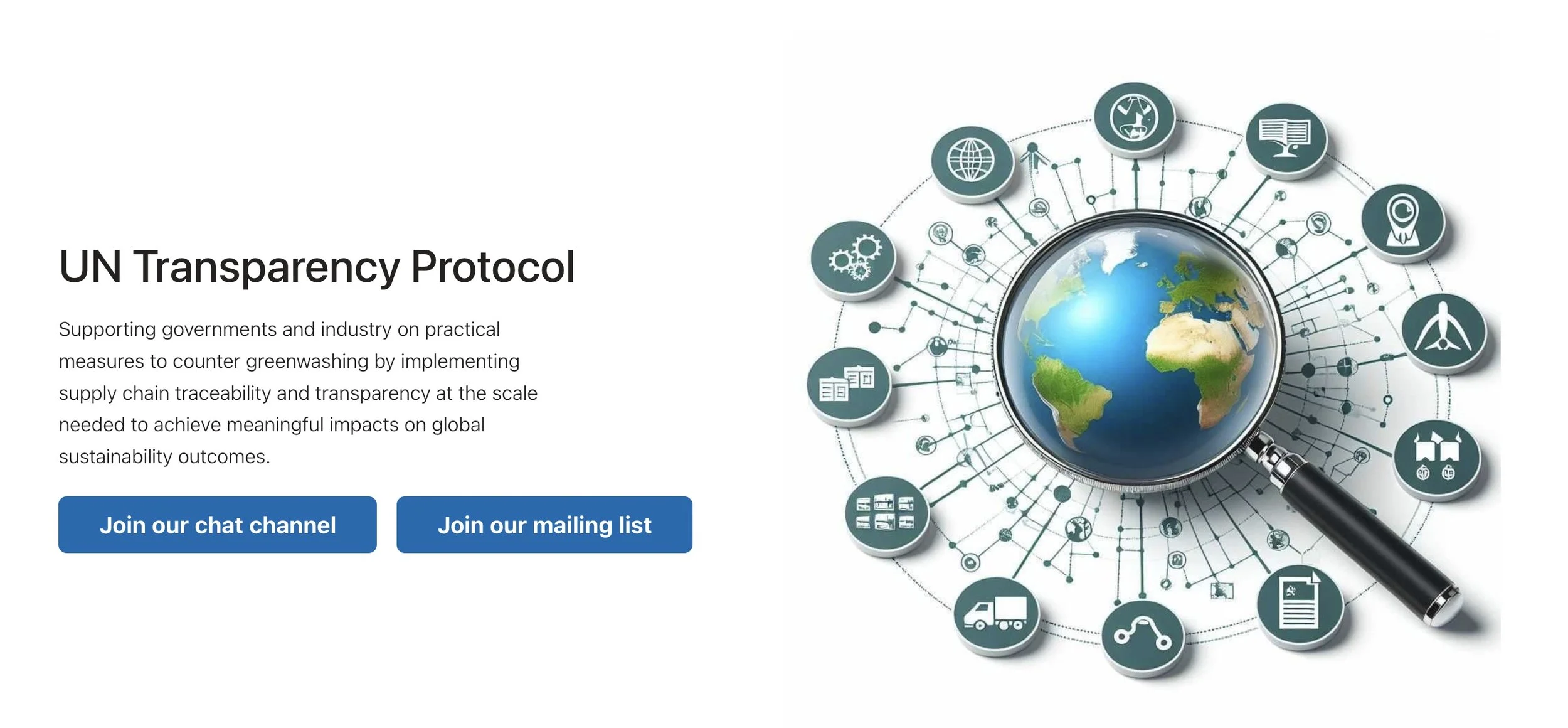Leveraging the UN Transparency Protocol for Sustainable Trade
Future-Proofing for Interoperability
By The Aeolian
As sustainability becomes a cornerstone of global trade compliance, companies must adopt data strategies that not only meet regulatory requirements but also build trust through secure and verifiable information exchange. Future-proofing digital systems in this context means ensuring that environmental, social, and governance (ESG) data is accurate, auditable, and interoperable across borders. Central to this goal is the emerging role of the UN Transparency Protocol (UNTP), developed by UN/CEFACT, which provides a powerful framework for establishing digital trust in sustainability disclosures.
The UN Transparency Protocol is designed to enable the exchange of structured, verified sustainability-related information across decentralized systems. It outlines an architecture where business claims—such as carbon footprint data or product sustainability metrics—can be securely anchored, digitally signed, and independently validated. For CTOs and data leaders, this introduces a scalable method for integrating verifiable credentials and decentralized identifiers (DIDs) into trade systems. For CFOs and compliance teams, it offers a blueprint for ensuring data integrity in reporting to regulators, investors, and consumers.
The Protocol builds on earlier UN/CEFACT work, such as the Core Component Library and semantic interoperability models, but goes further by offering a trust framework applicable to real-world use cases like Digital Product Passports (DPP), emissions tracking, and supply chain traceability. By aligning data declarations with digitally signed attestations and tamper-evident logs, the UNTP ensures that sustainability data can be verified without disclosing sensitive business information.
Integrating this protocol requires businesses to adopt modular, API-driven systems that can issue, request, and verify structured claims. Standards such as GS1’s EPCIS 2.0 are compatible with this approach and support the level of traceability needed for UNTP implementation. For instance, EPCIS can log supply chain events, while the UNTP provides the meta-layer of trust and verification for claims about those events.
The World Customs Organization (WCO) and the World Trade Organization (WTO) both emphasize the importance of secure and trustworthy trade data. In this light, the UNTP represents an important innovation—enabling ESG disclosures that are portable, verifiable, and consistent across jurisdictions. Pilot initiatives in the EU and Asia-Pacific are already exploring how the protocol can be applied to DPP and carbon footprint disclosures, especially in high-impact industries like electronics, textiles, and transport.
Practical adoption also requires internal alignment. Companies should establish compliance innovation teams to assess how the UNTP can integrate with their data architecture and ESG strategy. This includes evaluating digital wallets, verifiable credential issuers, and third-party validators that can support the protocol’s infrastructure.
In conclusion, the UN Transparency Protocol offers a forward-looking, standards-based pathway to meet the dual demands of data interoperability and digital trust. By embedding its principles into system design and corporate reporting, companies not only ensure regulatory readiness but also enhance credibility and resilience in sustainable global trade.

